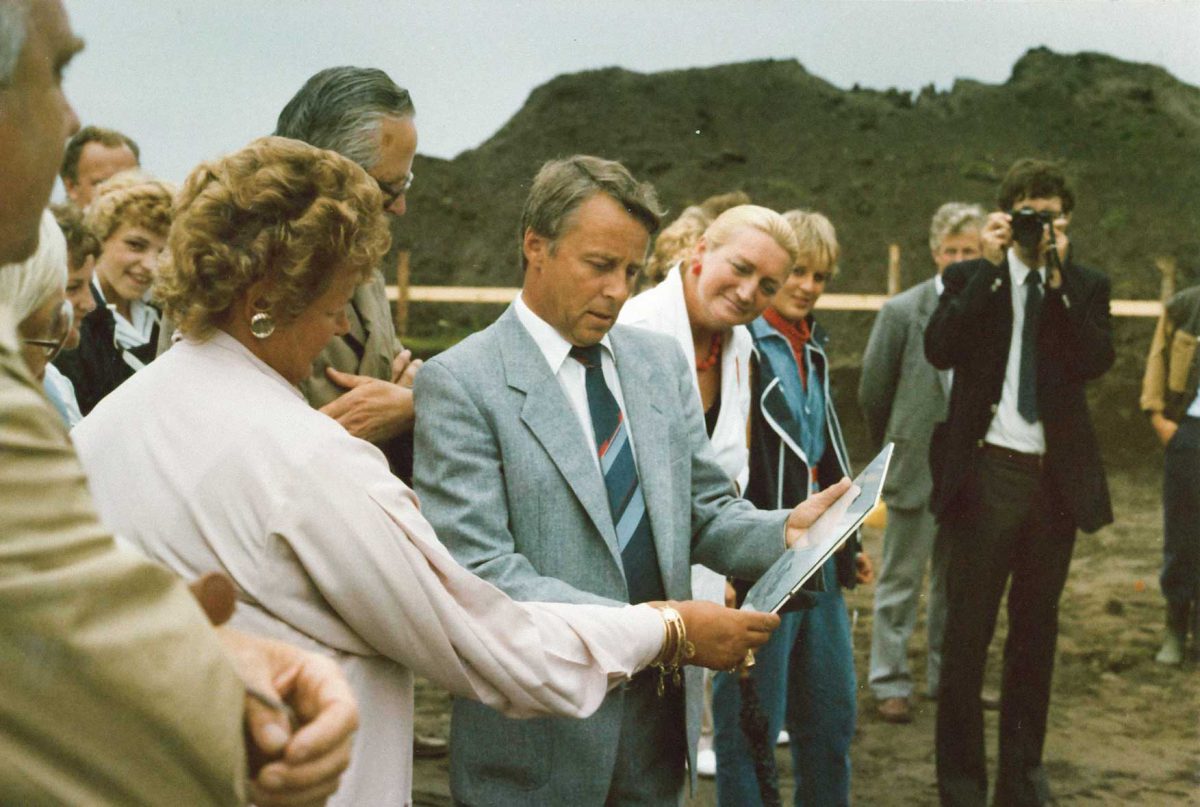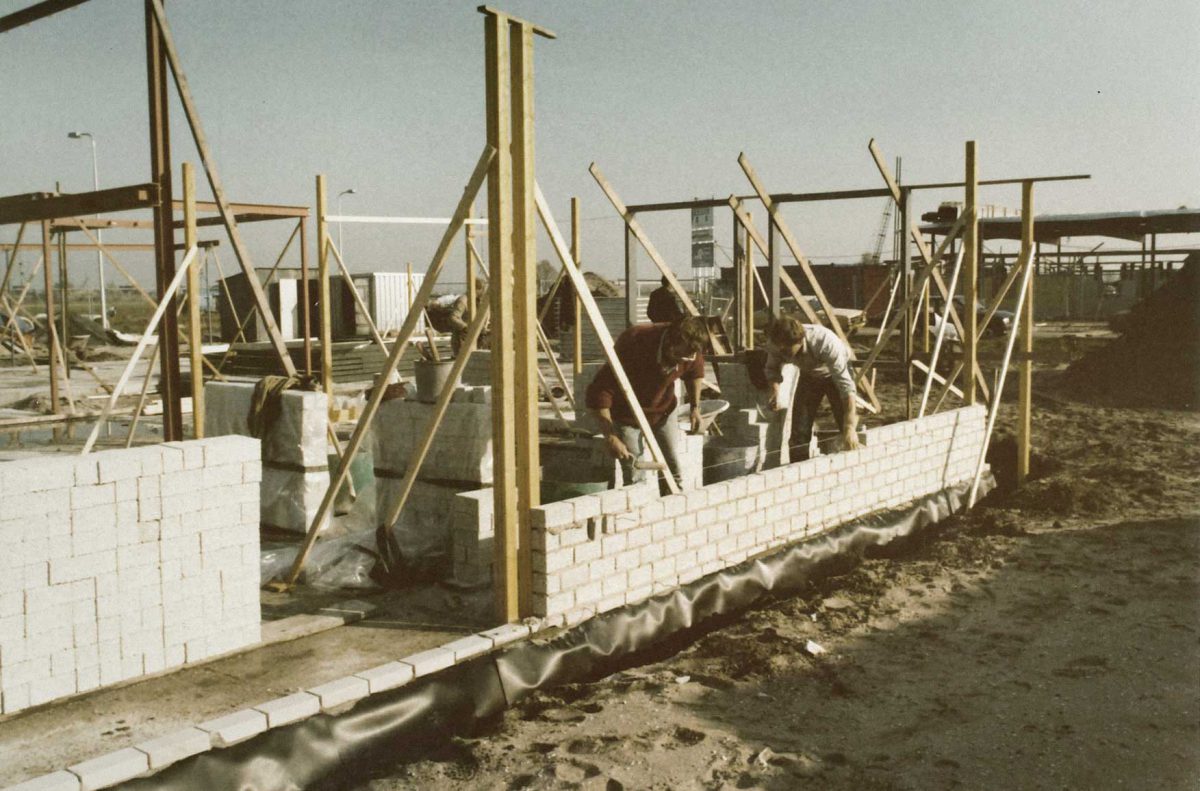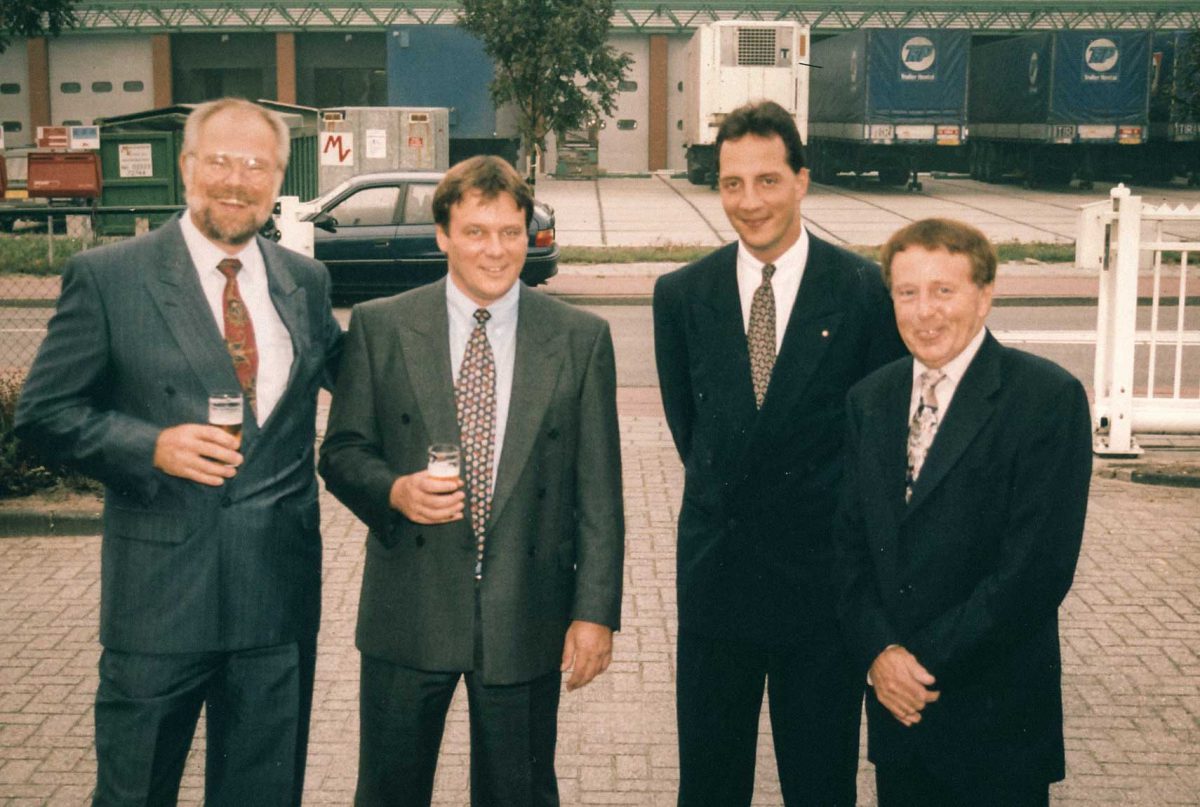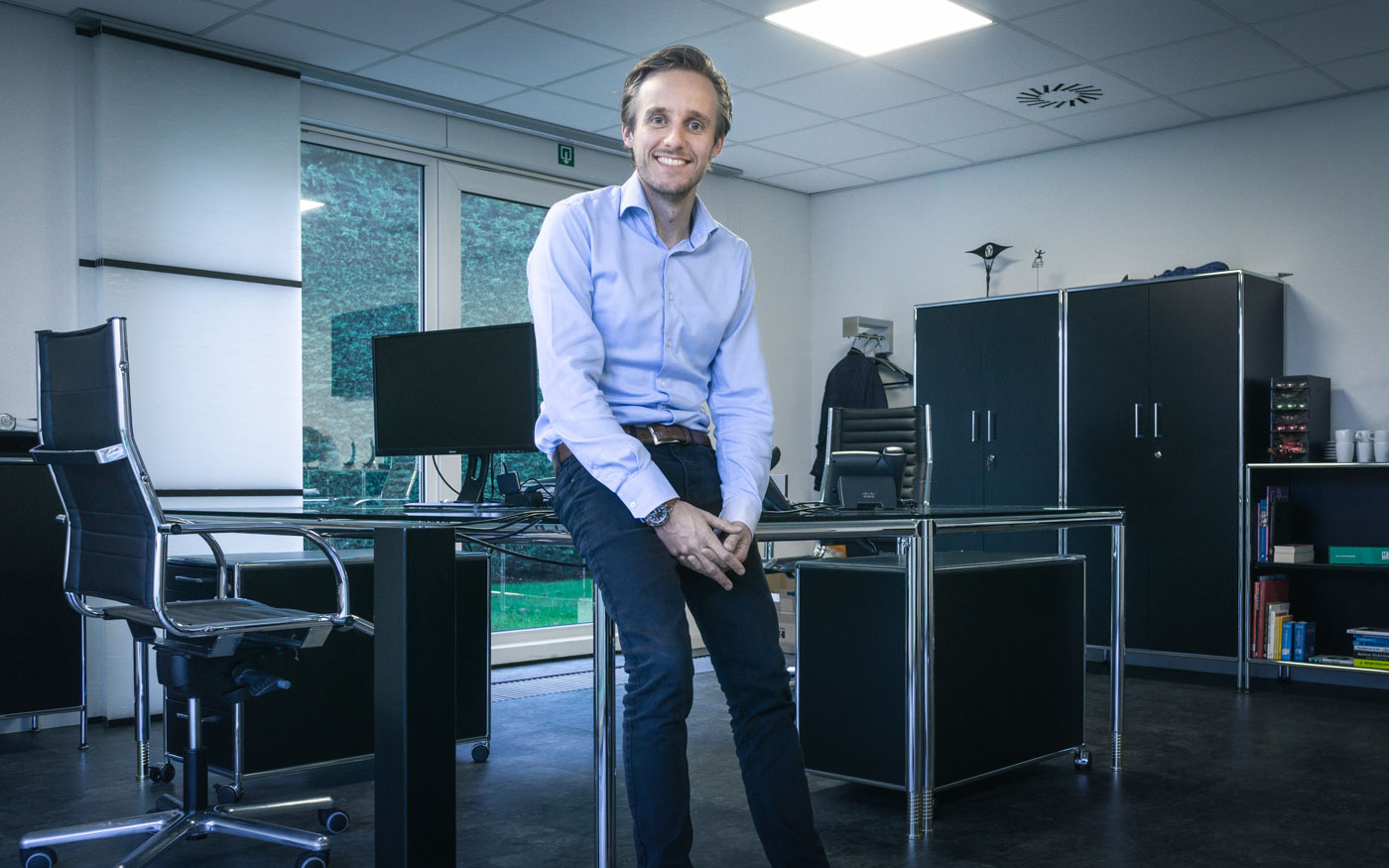When CEO Wouter Verschuren took over the reins of Istec from his father Dé Verschuren, Wouter set his vision on growing the business by taking on the global competitors and launching the company into new geographical markets. Wouter and his team embarked on a journey to identify the most effective course of action to execute the growth plan. To act differently, they needed to think differently.
A legacy of adaptation
Wouter’s grandfather Theo Verschuren founded Istec in 1974, as a supplier of industrial measurement and control devices with a special focus on rotating equipment. In those days there was abundance of engineers, products were generally simple, the free movement of goods did not exist yet, the market was far from transparent and customers had hardly any access to new technologies. “My grandfather’s business idea was to streamline the operations of industrial plants, by importing and offering new technologies of validated quality to the market”, Wouter says.

Since then, both machine protection and condition monitoring industries, and Istec, have gone through a significant transformation. Wouter’s father Dé Verschuren, who took over in 1995, re-positioned the business in the early 2000’s, as two forces of change swept over the business landscape almost simultaneously. As both the level of digitalisation and product complexity increased, the availability of engineering resources to manufacturing companies dwindled. The new digital systems enabled manufacturing companies to gather and process data, to increase the uptime of critical rotating machinery. Simultaneously the scarcity of engineering resources necessitated an external end-user support service.

Since 2004, Istec’s service has focused on advising and supporting in-house maintenance and turnaround teams with the protection and condition monitoring systems of large rotating machinery. “My father believed that our competitive advantage as a distributor should be built around high-quality service and excellent data analysis skills. Nowadays, we have the biggest in-house team of highly certified vibration and speed sensing experts servicing the majority and representing some of the leading brands in their respective markets”, Wouter states.

The business
Industrial plants typically contain a wide range of rotating machines which are operated with various machine protection and condition monitoring systems. Some process-critical rotating machines are legally required to include machine protection systems, and plant operators also install them onto other machines they deem fit. On the other hand, unlike machine protection, the incorporation of condition monitoring systems on expensive or process-critical machinery is a business decision.
The ultimate goal is to maximise uptime and thus the total value of machinery. However, to ensure the correct operation of machine protection and condition monitoring systems must they be actively maintained.
The OEM standard practice
The OEM’s offer maintenance support as an additional service to their customers’ in-house maintenance teams. The OEM’s brand-dependent teams mainly operate through centralised service hubs and only to maintain their own systems. Thus, the end customers’ in-house maintenance teams are forced to manage a complex operation, as they co-ordinate the work of several OEM support teams simultaneously. Additionally, the OEM’s central service hub structure makes the availability of the non-local service teams far from guaranteed.
This common practice burdens the end customers’ in-house maintenance teams and can lead to unnecessary downtime. And while it’s not optimal, it is what the in-house teams are used to dealing with.
Exceptions to the norm
A more affordable option, compared to the OEM’s support service, are maintenance service generalists. Their main business is mechanical maintenance of machinery, but they also offer condition monitoring and hardware support as a secondary service. The challenge is that mechanical maintenance companies neither possess in-depth know-how on condition monitoring processes nor employ data analysis experts.
The third option for industrial plants is to support their in-house teams by employing speed and vibration sensing specialists. This model, due to the task’s critical role in plant operation, is what European plants have favoured until recently. However, constantly available highly experienced staff, albeit with low occupancy, is a bump on the opex.
The fourth option, which is currently gaining popularity, is Istec. A brand-independent end-user care company, offering expert maintenance services on any system on-time with a local crew.
A growing need for expertise and availability
The essence of all innovation is to create more with less. Machine protection and condition monitoring are no exceptions. The emergence of new technologies, semi-automated data analysis capabilities, cheaper sensors and cheaper infrastructure will lead the predictive maintenance practices, which were typically applied only to the most critical and expensive rotating machinery, to being also applied to mid-segment machinery.
However, the large-scale commercialisation of mid-segment condition monitoring solutions will have to wait, as there are currently no robust solutions which can guarantee sufficient data quality. This being the case, the main focus of industrial plant managers is still on increasing the safety and uptime of top-segment machinery by improving maintenance efficiency.
Safety regulations driving change
The key drivers for change in the market are the functional safety or SIL (Safety Integrity Level) obligations. Only certified experts can consult, implement and maintain suitable safety systems and procedures to meet the strict legal obligations. Consequently, the gap between product complexity and the know-how of in-house maintenance teams keeps growing. This time it also increasingly burdens the larger industrial plants, which typically have been a mostly self-contained customer segment.
Data quality is money
The accuracy of machine condition monitoring data goes hand in hand with machinery uptime and lifetime. There are three elementary steps in analysing vibration data; acquisition, processing and analysis. Each step must be performed to perfection for maximum results. It is a daunting task which requires a vibration and speed sensing expert.
Both data acquisition and processing require a deep understanding of available hardware and expertise in different customer applications. Analysing data is a complex operation and false positives can be equally expensive as failures, so it takes experience to present correct maintenance recommendations.
The strategic options
The market developments have caused a growing demand for talent with an uncompromising service mentality, required certifications and in-depth knowledge of all major machine protection and condition monitoring systems in the market. To ensure accurate maintenance of advanced machine protection and condition monitoring systems the decision-makers of industrial plants have basically three options.
- Keeping in-house maintenance teams working with several brand-dependent OEM support teams
- Hiring experienced engineers to fortify in-house maintenance teams
- Outsourcing maintenance to one single brand-independent team
Istec’s new growth plan is based on the insight, that hardware becomes a commodity and the brand-independent service becomes the key purchase driver also among the largest industrial plants. “My father’s intuition about the service business potential proved to be 100 % right. The culture, mindset and business model he built serves as a solid business foundation for me to take Istec to the next level”, says Wouter.
As for Istec’s growth ambitions, according to Wouter: “There are businesses that are about size and “winner takes it all”. True service business, at least in our field, is not about that. Our goal is to conquer the Northwestern European markets, not the world. We operate in a human centred niche market, the business model of which is not the most scalable. Our service business growth story will be an organic growth.”
Bridging gaps
Istec’s growth ambitions go beyond the service market, as they also recognised a business opportunity for new hardware products. Istec realised that the machine protection and condition monitoring products, which are often integrated into one large product, no longer serve the market needs. Istec’s customers required uncomplicated protection systems as independent protection layers for machinery, and also affordable data acquisition and transmission tools without links to the control and protection of the machine.
“We reached the point where the product gaps were becoming too big and decided to act on the opportunity. Once you have made the decision, things move fast when you have the culture, capabilities and resources to transform insights into practice “, Wouter tells.
What is interesting, is that Istec’s product suppliers have shown great interest in partnering up with Istec to distribute Istec’s new products. A wonderful proof that roles can change in a value chain and an example of the value chain transforming into a more flexible value network.
Building a future
To capitalise on the observed changing market needs, and set the company on the growth path, Istec’s team decided to reposition the company once again. As with any family-owned business, Istec’s specialists were busy delivering a high-quality service experience to their customers and rarely had the time to look at their business from outside-in. What Istec needed was a sparring partner to help them think differently. As Istec already had an experienced and ambitious in-house digital marketing team, running an effective marketing operation, they did not need a partner focusing on creating tangible deliverables.
“We knew that we got something big here, but our team struggled to translate our essence into an actionable, customer-facing growth strategy. Through a recommendation, we met the strategy team of Ross Republic. Their approach was no-frills and to the point from the very first moment”, Wouter thinks back.
The great extraction
Ross Republic’s strategy team facilitated two intensive workshops, both designed to scrutinise Istec’s positioning, product portfolio as well as sales and marketing strategies from outside-in. During the first workshop, the Istec team uncovered their blind spots, differentiation opportunities and customer journey bottlenecks. The second workshop was tailored to seize the identified opportunities and fix non-customer centric marketing and sales practices.
“This was the first time when our team’s vast knowledge was extracted from us in a customer-centric and a structured way. While documenting our views on the wall, the Ross Republic team enriched and challenged our thinking throughout the day. It is amazing how fast you can identify the key issues and elevate your strategic thinking when you have the right sparring partner”.
Irregardless of the industry, being the first to disrupt established business practices is both an exciting and an unenviable job. It becomes even more challenging in complex B2B environments, where issues such as undisrupted production, regulations and safety play a major role. Istec’s team learned that simply providing a superior solution was not good enough to win a market share from established players. In fact it was merely a prerequisite to kick-off a complex multi-stakeholder sales process; essentially a dialogue on how to break free from the traditional specification boundaries, and introduce change to implement a new efficient model.
As a result of the engagement with Ross Republic’s team, Istec now had the tools to communicate and convince each stakeholder group about the compelling benefits of their unique approach and solution.
Istec Response™
The new full-service standard
Hardware generates data, but it takes an experienced specialist team with in-depth knowledge of all major brands’ systems to run the machine protection and condition monitoring show effectively. Istec’s goal is to establish a new standard for the industry, which is built around Istec’s leading vibration and speed sensing experts; Istec Response™.
One team for all
Istec Response™ enables maintenance teams to transfer control of complex protection and condition monitoring systems to a team of specialists. Istec Response™ focuses on all critical phases of the process, from selecting suitable hardware and managing turnarounds to data analysis and lifetime support. The extensive experience of the largest in-house team of vibration and speed experts guarantees a suitable solution for every configuration of processes, systems and machines.
Best availability of teams and hardware
Istec Response™ guarantees high availability of local teams with dedicated experts. Intensive cooperation with leading hardware suppliers and a comprehensive stock of spare parts enables Istec to offer the fastest and most accurate service in the market for condition and machine monitoring.
A new dawn for maintenance strategies
Finally, with Istec Response™, the customer will have the best quality sensors and systems from reputable suppliers and full support to maximise the safety and availability of machinery. Istec’s measurement data forms the basis for new machine insights and maintenance strategies.
Supporting the internal change-maker
“Whoever inside the client’s organisation decides to take maintenance to the next level, takes a personal risk despite the evident business benefits. Fundamentally, we are talking about plant productivity here and no one wants to risk it. The key focus of our commercialisation efforts is now to provide maximum support for that person”, sums Wouter Istec’s approach.
From strategy to action
Istec is currently working on rolling out the new strategy and challenging the global hardware giants. They have made their first moves to expanding beyond the Benelux countries. It has opened an office and team at the industrial terrain of Geleen which is strategically positioned to approach industrial plants in the Ruhr Area in Germany. Istec currently also offers a fully translated German website.
Ross Republic
We strive to create meaningful action for our clients and like to see things evolve. Working with Istec has been very rewarding on many levels, but specifically due to their progressive mentality and hunger to implement change. Once the strategy and roadmap were designed, they set to work without hesitation. Our work with Istec continues, and we are thrilled to be a part of their fearless journey of developing the world of machine protection and condition monitoring.

About the author


